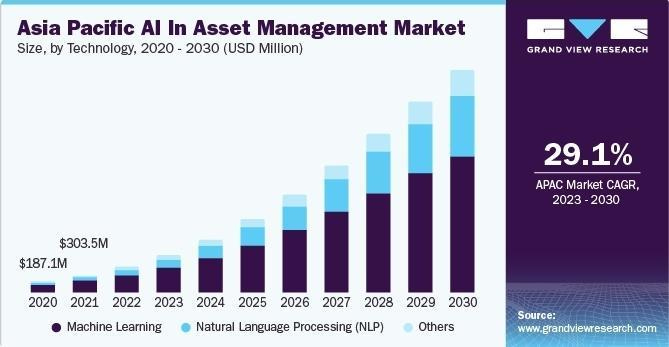The Futures - No. 30
Religion goes digital / AI in wealth management / Artists fighting back against AI
In this issue
The Quantumrun team shares actionable trend insights about the digitization of religion, the increasing use of AI in wealth management, China’s electric vehicle (EV) dominance, and a tool that allows artists to fight back against their work being used in generative AI training.
Future signals to watch
Western automakers have seemingly been caught unaware of China’s electric vehicle (EV) boom. While some Western models are just in the concept stage, Chinese car brands are already selling advanced EV models and features into the market.
Researchers just developed Nightshade, a tool that allows artists to add invisible changes to their pixels before uploading. If these images are then scraped for AI image generation training, they can “poison” the resulting model, rendering the output useless (e.g., a cat is generated as a cow).
Some researchers argue that large language models like ChatGPT, Bard, LLaMA, and Claude have already achieved artificial general intelligence (AGI) (characterized by self-awareness).
On October 25, 2023, researchers published that they successfully created a neural network with human-like capabilities.
Foxconn, the world’s largest electronics manufacturer, is looking to double its workforce and investments in India in 2024.
China takes food security to the next level, building a 26-story skyscraper pig farm with smart technology.
Researchers are testing a low-cost irrigation system powered by solar to enable precision agriculture to be more affordable.
Elon Musk launched his AI bot to rival ChatGPT. Unlike large language models that are trained through old data, Grok can access X (Twitter) data in real time.
💡 Watch Quantumrun’s trend videos on Linkedin & YouTube & Instagram & TikTok
🙏 Could AI become the next religion?

Through the ages, from the alchemists of the 13th century to the futurists of the 21st, the pursuit of divine perfection has shaped our approach to technology. Christian and Jewish folklore, and Islamic tales spoke of automata and golems, prefiguring modern anxieties and aspirations associated with Artificial General Intelligence (AGI). Concerns about AGI bringing either salvation or destruction echo these ancient stories, highlighting humanity’s unbroken fascination with creating life and transcending mortality through technology.
This quest has given rise to movements like transhumanism, effective altruism, and longtermism, with thinkers and communities in Silicon Valley seeking to use technology to propel humanity towards a utopian future. Despite the secular language and scientific veneer of these movements, their structure, goals, and narratives bear striking resemblances to religious traditions.
Technology can facilitate religious practices, enhance spiritual experiences, and broaden access to religious communities and resources. For example, apps that deliver daily prayers, virtual religious ceremonies, and online platforms for religious education and discourse can foster community and spiritual engagement, especially for individuals unable to participate in traditional religious settings.
The interface of AI Tarot Nova

However, this trend also raises ethical and philosophical questions. The intrusion of algorithms into belief and spirituality opens up possibilities for manipulation, commercialization, and loss of authentic religious experience. There is a risk that technology could distort spiritual practices and values, reducing them to commodified experiences tailored by algorithms for user engagement. Finally, the potential for surveillance and data collection within religious apps and platforms poses additional concerns regarding privacy and the exploitation of personal beliefs for profit.
Actionable trend insights as AI digitizes religion
For entrepreneurs:
There is potential for developing AI-powered platforms that facilitate interfaith dialogue and understanding. Entrepreneurs could create applications that use AI to analyze, compare, and highlight commonalities and differences across various religious texts and teachings. By doing so, they promote cross-cultural and interfaith understanding, contributing to a more tolerant society.
Such platforms could provide users with curated content, discussion forums, and virtual events that foster meaningful conversations and learning experiences among diverse religious communities.
It may also be possible for AI to suggest religions (or even create personalized religions or belief systems) that reflect each person’s sensibilities, guiding them to use such beliefs to become the best versions of themselves.
For corporate innovators:
Companies could implement AI-driven tools to enhance religious inclusion and diversity in the workplace. By integrating AI-powered cultural and religious literacy programs, companies can educate their employees about various faiths, spiritual practices, and cultural sensitivities.
For instance, an AI system could provide timely information and resources to managers and team members about upcoming religious holidays, appropriate greetings, or dietary restrictions, helping to foster a more respectful and inclusive workplace culture.
For public sector innovators:
Government agencies can utilize AI to monitor and analyze online religious discourse to promote tolerance, prevent radicalization, and monitor emerging cults. By employing AI tools that can identify extremist content or hate speech related to religion, authorities can take proactive measures to counteract divisive narratives and promote positive interfaith relations.
For example, AI systems could analyze social media posts, forums, and news articles to detect patterns of religious intolerance or radicalization, enabling timely intervention and support programs.
Trending research reports from the World Wide Web
This dashboard on global labor shows that some countries, like Germany and the UK, are experiencing a “tight” market (there are more vacancies than unemployed).
This compilation of explainers discusses why AI is becoming a severe Hollywood problem. From deepfakes to copyright issues, writers and actors might be putting a lot of trust in the studios to do the right thing.
According to Deloitte, surveyed medical technology (MedTech) executives use digital innovation in clinical trials, therapeutics, and data-enabled therapies.
Based on the EY 2023 Work Reimagined Survey, only 17% of employees and 22% of employers prioritize training in generative AI-related skills in 2023.
Ben Evans discusses whether AI should be specialists instead of general assistants.
💸 Wealth managers are banking on AI

Goldman Sachs is expanding its use of AI in wealth management, focusing on a "regularization-based" asset-hedging tool. This AI-powered system aims to predict the performance of a hedging portfolio in relation to a specific asset. A hedging portfolio comprises assets that limit the risk of significant price drops in another investment or stock.
Goldman Sachs asserts that this approach addresses the issue of "overfitting" common in conventional AI-based hedging tools. Overfitting occurs when a model is excessively tailored to its training data, resulting in poor performance when exposed to new data. This limitation affects the tool's ability to generate effective risk-hedging portfolios for future asset performance.
The bank is actively pursuing AI, predicting a 7% increase in global gross domestic product (GDP) by 2030 due to generative AI, and anticipating a USD $200 billion investment in the technology by 2025. However, compared to other financial firms, Goldman Sachs is proceeding more cautiously in integrating AI into its operations.
This cautious approach comes at a time when the affluent and mass-affluent segments in Asia, particularly in developing economies, are rising. The investable assets of this demographic are expected to reach USD $4.7 trillion by 2026, with potential incremental revenue for banks and wealth managers estimated between USD $20 billion and USD $25 billion. To capitalize on this opportunity, banks and wealth managers need to adapt their services to be more personalized, efficient, and digitally driven, leveraging AI-powered decision-making and analytics.

Actionable trend insights as wealth managers increasingly use AI
For entrepreneurs:
They can develop niche AI-driven financial products that cater to specific market segments. For instance, they could create a platform that uses AI to provide financial advice and investment strategies tailored for freelancers and gig economy workers, considering their irregular income patterns and unique financial needs.
Such innovations can further expand access to wealth management in underserved markets and offer innovative solutions that stand out in the competitive wealth management landscape.
For corporate innovators:
Companies in the financial sector can integrate AI into their wealth management services to enhance customer experience, improve operational efficiency, and deliver more accurate and personalized advice.
They could implement AI-powered chatbots and virtual assistants to handle routine customer inquiries, freeing human advisors to focus on more complex and value-added tasks.
Additionally, corporations can use AI to analyze vast amounts of financial data, identify investment opportunities, and optimize asset allocation strategies, ultimately driving better economic outcomes for their clients.
For public sector innovators:
Government agencies overseeing tax collection and social security funds can leverage AI in wealth management to improve the financial literacy of the citizens they serve as it relates to saving, investing, and retirement planning.
Governments can use such tools to better invest public funds for more reliable returns on investment.
Similarly, governments can also use these tools to monitor the level of risk being taken by the wealth management firms operating inside their borders or serving their citizens.
Outside curiosities
This technology can turn movies into virtual reality formats you can walk around in using Gaussian Splatting and Unreal Engine.
This luxury online store used bacteria to dye scarves (dubbed as haute coulture).
Researchers who studied why people lie are now being accused of falsifying their research data.
NPR discusses how “nudity creep” is being used by cable TV and streaming platforms to attract more audiences.
If you’re ever wondering how much chaos a deer can cause inside a restaurant, watch this.
More from Quantumrun
Read more daily trend reporting on Quantumrun.com
Subscribe to the Quantumrun Trends Platform (free for premium newsletter subscribers).
Corporate readers can review our Trend Intelligence Platform
Email us at contact@quantumrun.com with questions or feedback.
Finally, share your thoughts in the Substack comments below. We love hearing from you!
David Tal, Quantumrun President: Interested in collaborating with the Quantumrun Foresight team? Learn more about us here.
See you in The Futures,
Quantumrun



